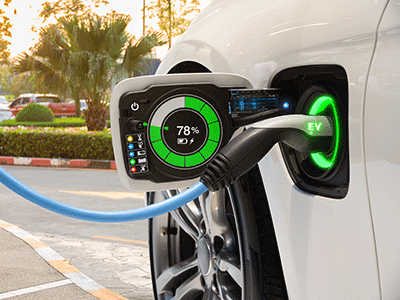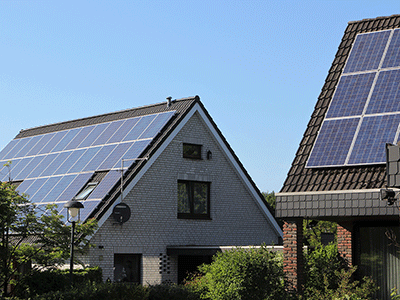Electrification of Transport
T
ransport currently contributes about 20% of New Zealand’s total greenhouse gas emissions1. As highlighted by the Interim Climate Change Commission (ICCC) report, Accelerated Electrification, increasing the uptake of electric vehicles will help to significantly reduce New Zealand’s emissions by 2035. Electrification of transport such as buses, trains and boats presents a major opportunity to further reduce greenhouse gas emissions over the long term and is something that is gaining increasing support.
 Here are some examples of positive steps being taken:
-
Here are some examples of positive steps being taken:
- The uptake of electric vehicles (EV)
continues to increase, boosted this year by the introduction of the new Tesla model
- As we see more electric vehicles on the road, it’s also important to consider the end-of-life management of such batteries. The Battery Industry Group
(B.I.G) is doing a lot of proactive work in this area which you read about
here
- Vector launched a trial of 120 EV smart chargers to understand and prepare for the impact of increased EV charging on electricity networks
- Waiheke is making the switch to electric buses with the first 6 buses due to be swapped in mid next year
- Ports of Auckland introduces its
first electric tug boat
- Wellington gets the
first electric ferry in the Southern hemisphere
People Power

Climate change protesting, fuelled by the younger generations, has been widespread around the world. Throughout September over 6 million people
2 took to the streets as part of an international movement sparked by teen activist Greta Thunberg to deliver their message to leaders ahead of the United Nations summit.
Here in New Zealand more than 40 events were held across the country signifying growing momentum around climate change action and a heightened concern for ensuring we secure a sustainable energy future for the next generations. New Zealand’s own Sophie Handford, winner of the Girlboss Sustainability Award sponsored by Vector, helped to mobilise 170,000 people in New Zealand for the strikes
3 and at just 18 years of age has
been elected as the Paekākāriki-Raumati ward councillor.
 For customers, greater interest in and awareness of sustainable living has brought about some behavioural changes, such as choosing to replace a petrol or diesel car with an electric vehicle and integrating solar and battery storage systems into their homes. The uptake of these technologies is enabling a more decentralised and renewable energy future with greater customer choice and lower emissions. A recent research report ‘Better Futures’ by Colmar Brunton which has tracked New Zealanders attitude towards sustainability over a period of 10 years, supports that a big attitudinal shift is taking place. This year’s results show that 30% of people are ‘highly committed’ to living sustainably which is a notable increase from previous years.
- In Piha, customers are trailling vehicle-to-home technology
For customers, greater interest in and awareness of sustainable living has brought about some behavioural changes, such as choosing to replace a petrol or diesel car with an electric vehicle and integrating solar and battery storage systems into their homes. The uptake of these technologies is enabling a more decentralised and renewable energy future with greater customer choice and lower emissions. A recent research report ‘Better Futures’ by Colmar Brunton which has tracked New Zealanders attitude towards sustainability over a period of 10 years, supports that a big attitudinal shift is taking place. This year’s results show that 30% of people are ‘highly committed’ to living sustainably which is a notable increase from previous years.
- In Piha, customers are trailling vehicle-to-home technology to see how this technology could help to ease expensive peak demand on the network as well as providing them with a back up supply for when they experience a short power outage.
- Slightly further from home,
SOLshare has successfully piloted a highly innovative
information communication technology (ICT) -enabled peer-to-peer electricity trading network. In Shariatpur, Bangladesh, the small number homes that have solar panels are connected to those who can’t afford to own their own, meaning more people benefit from clean reliable electricity. The peer-to-peer system means neighbours can sell excess electricity to one another. Similar to the
Kupe Street community project that Vector was involved in, this demonstrates the true potential of distributed, renewable energy resources.
Change from the Top

Earlier this year, the ICCC released findings on how to reduce emissions from New Zealand’s energy sector highlighting the importance of electrifying transport and industrial processes. The Government announced an EV feebate to make it easier for those buying a new-to-New Zealand car, to choose an EV. The importance of new technology and innovation to support decarbonisation is shown through the New Clean Energy Centre in Taranaki4, as well as a focus on innovation in the Electricity Price Review. The Zero Carbon Bill will provide a framework to help reduce national emissions.
Innovation and new technology

Adoption and roll out of new energy technologies are central to achieving increased energy efficiencies. Solar, battery and hydrogen are all key to the progression of clean energy solutions for both large and small-scale demands. Support for this technological development has seen growing support:
- In the latest release of the
Electricity Pricing Review (EPR) report there was recognition that investment in innovation and new technology solutions was required to secure a sustainable energy future. There is an opportunity for industry and Government to work together to ensure that new technology and innovation is enabled.
- New Zealand’s first floating solar array – Earlier in September Watercare and Vector announced plans to build New Zealand’s largest solar panel array. This is an example of an innovative collaboration that will help achieve carbon reduction targets.
- Vector PowerSmart supporting Niue’s new energy future – A new solar and battery technology solution that is helping Niue to reduce its Diesel consumption, alongside CO
2 emissions
More widely, it has been reported that a selection of 30 major cities
† in the
C40 coalition have successfully reduced carbon emissions by 22 percent
5 including our neighbours Sydney and Melbourne. This further highlights that positive results can be achieved over time. Auckland is also proud to be a C40 city and is currently consulting on its Climate Action Framework, so it will be interesting to follow its progress over time once the framework is set.
In celebration of World Energy Day 2019, Vector Lights on Auckland Harbour Bridge will light up on Tuesday 22nd October reinforcing the story about New Zealand’s pioneering energy past, and our hope for a new energy future. Visit vector.co.nz/lights to play the show’s narration.
Footnote:
† Based on an update to C40’s 2018 analysis, which identified a handful of cities across the global north that have hit their “peak” emissions before 2015, meaning they have since reduced their greenhouse gas emissions by at least 10 percent.
References:
1. Ministry of Transport Climate change and Energy https://www.transport.govt.nz/multi-modal/climatechange/
2. The Guardian, Climate crisis: 6 million people join latest wave of global protests https://www.theguardian.com/environment/2019/sep/27/climate-crisis-6-million-people-join-latest-wave-of-worldwide-protests
3. New Zealand Herald, Climate change march: Thousands of schoolkids' action inspired by Greta Thunberg https://www.nzherald.co.nz/nz/news/article.cfm?c_id=1&objectid=12271480
4. The Beehive, Government invests in clean energy centre to help power New Zealand’s economy https://www.beehive.govt.nz/release/government-invests-clean-energy-centre-help-
power-new-zealand%E2%80%99s-economy
5. CityLab Carbon Emissions are Already Falling in 30 Cities https://www.citylab.com/environment/2019/10/c40-peak-carbon-co2-emissions-highest-cities-climate-summit/599644/?